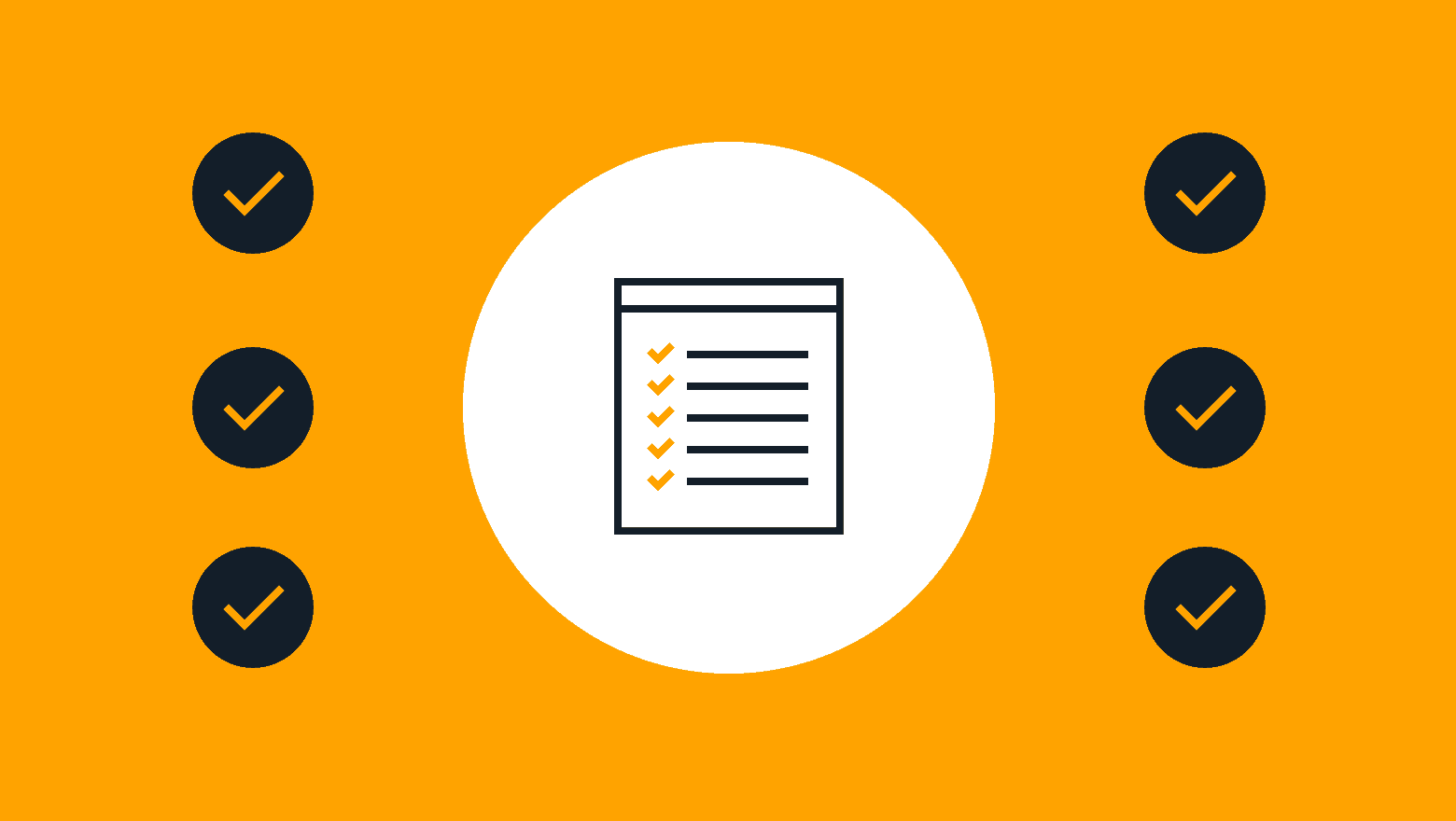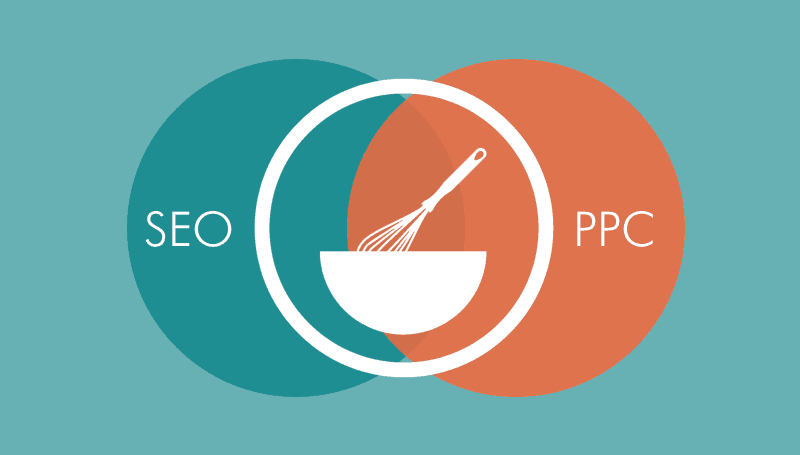SEO Page Title: How to Increase Rankings & CTR
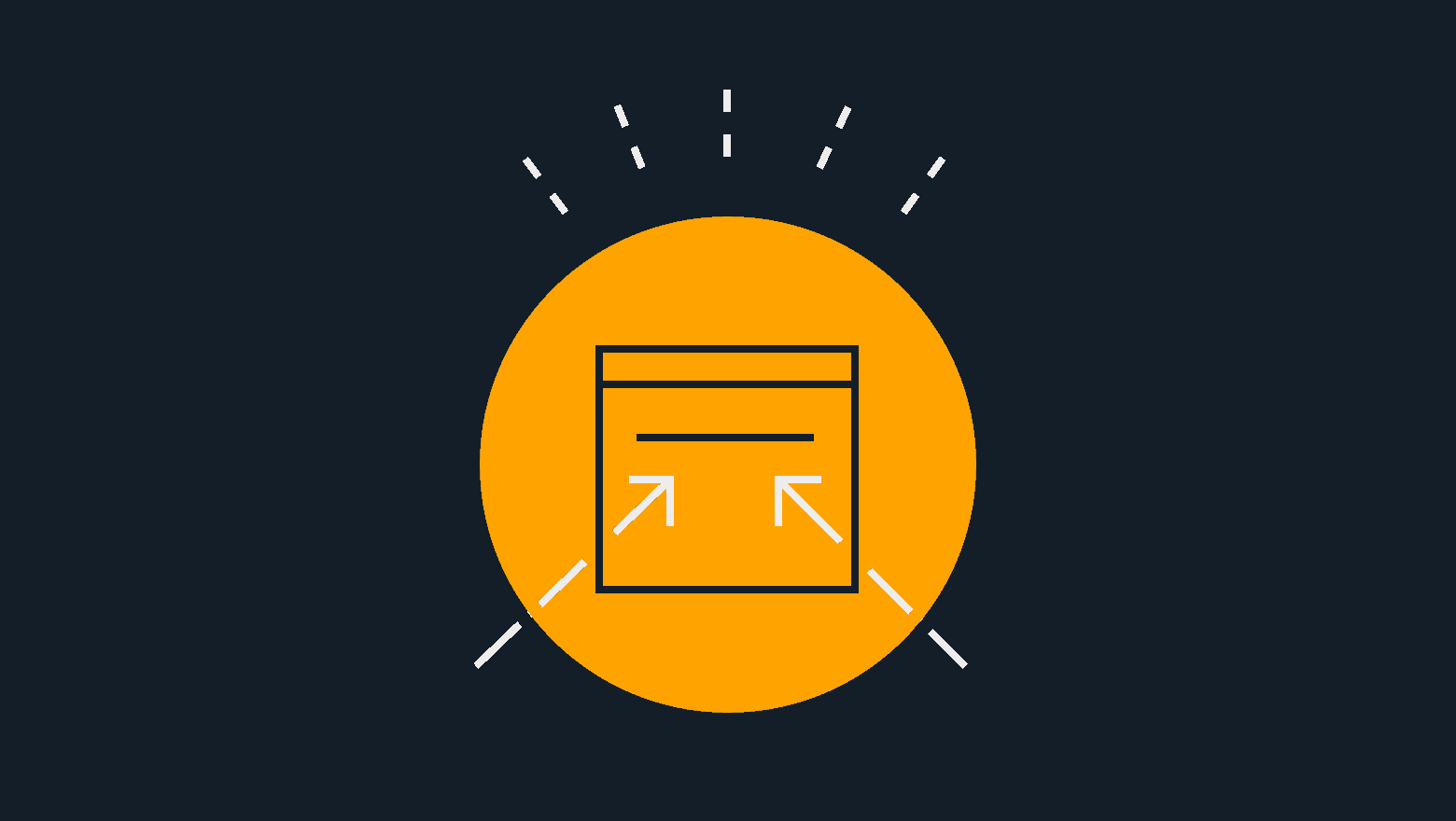
Are you struggling to come up with the perfect SEO title tag for your latest blog post, core page, or content marketing play?
Understanding the difference between a well-optimized page title and a totally ineffective one is an important step in figuring out how to do on page optimization in SEO.
Not only do page titles affect how search engines like Google interpret the theme and subject matter of your website, but they can also impact user experience and whether audiences even bother to visit your page.
To help you come up with the best page title for your new blog post or article, we’ve put together this short guide on how to increase rankings and CTR with an optimized SEO page title.
What is an SEO Page Title?
Every page on your website should have a title that accurately and concisely describes the contents of the pages.
For web pages coded in HTML, meta tags are used to store important information about the page such as the title, meta description and numerous other details.
On HTML web pages, the title of the page will be stored in a meta tag known as a title tag. You can view the title tag of most web pages on the internet by navigating to the page, opening the right-click menu and clicking on “View page source”. Your browser should open a new tab that displays the HTML code for the web page you were just viewing.
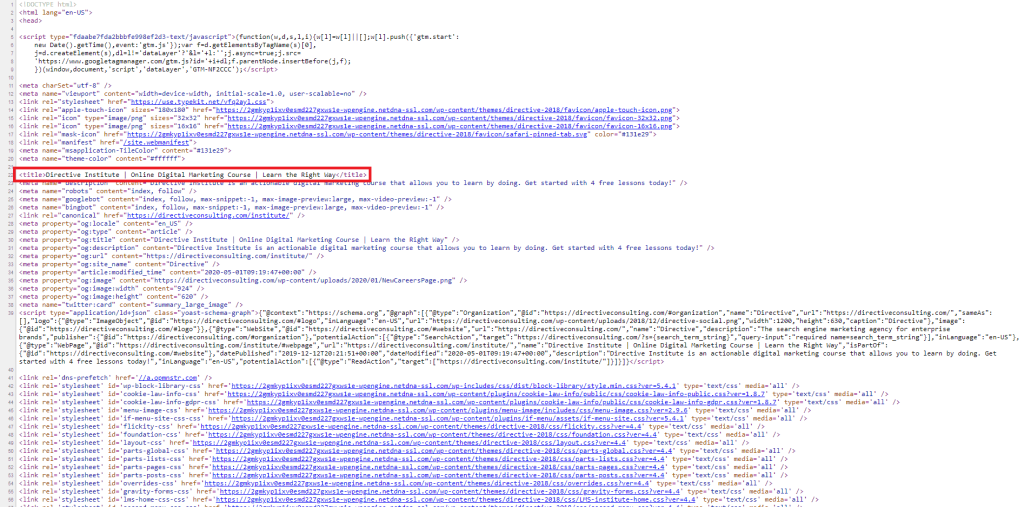
Image: HTML source file for the Directive Institute page.
The title tag begins “<title>” and ends with “</title>” and contains the title of the page. For the example pictured, we’ve highlighted the full title tag in red.
The contents of your title tags should be optimized to ensure that:
- Search engines can understand what each of your web pages is about
- Search engines can rank your pages for the appropriate keywords
- Users can quickly determine the contents of your page by reading the title
- Users are encouraged or enticed by your title to visit your web page when it appears in search results
An SEO page title is a title tag that effectively addresses all of these requirements.
Why is an SEO Page Title Important?
The way you write page titles can have a significant impact on how your pages perform in the search engine results pages (SERPs).
Google uses web robots known as crawlers to index new web pages that appear on the Internet. Crawlers read the contents of HTML title tags to get clues about the subject matter of each page.
If your page title is properly optimized, crawlers should be able to determine the relevance of your content and rank your new page accordingly.
If your title tag is poorly optimized (or even empty), search engines may struggle to determine the relevance of your content or it may appear to be of low quality. As a result, you probably won’t rank well at all.
Page titles also have an impact on user experience.
The contents of your title tag are used at different times by browsers and search engines to convey information to users about your website. If your SEO page title is appealing and descriptive, users will be more likely to click through and visit your page. If your page title is bland or forgettable, users may not even notice it’s there.
In the next section, we’ll show you several places where page titles are shown to users.
Where Do Page Titles Appear?
Digital marketers should be aware of the many different ways that page titles will be displayed to users. Take a look at these examples of how users could be engaging with your page title as they surf the web.
Search Engine Results Pages
When Google displays one of your web pages as a result in the SERPs, it uses the text in your title tag to generate the headline for the search result. The headline is the clickable portion of the search result and the first thing that potential visitors to your website will read, so it’s important to make a good first impression!
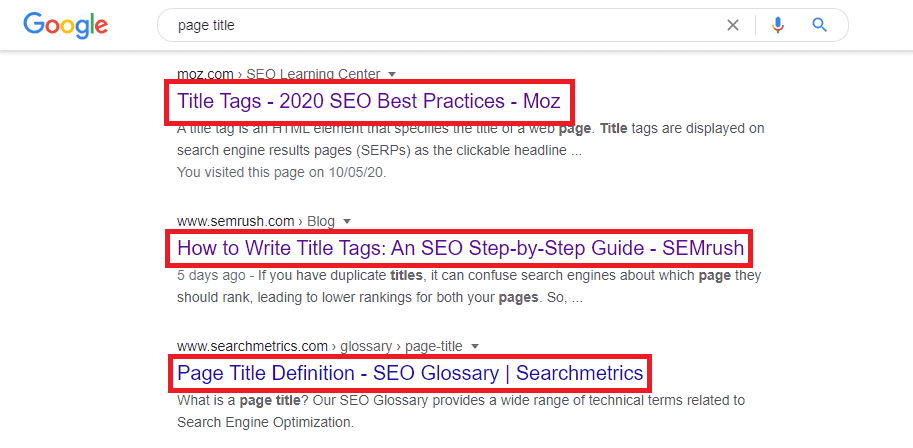
Image: Google uses title tags to generate headlines for search results.
Browser Tab
If your browser supports tabs, the same text from the HTML title tag will be used to describe your web page in the browser tab. Title tags displayed this way are frequently cut off on the end, so it’s important to put the most important information at the beginning of your title tag to make sure it’s visible to users more often than not.
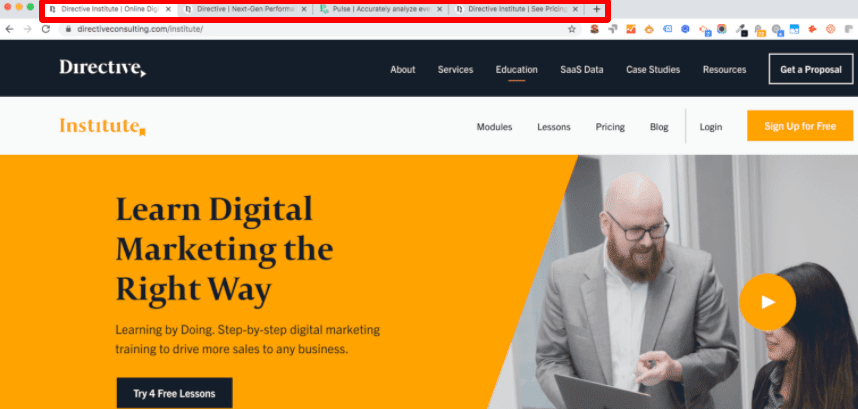
Image: Browser tabs display the title of the page as it appears in your HTML title tag
Bookmarks Bar
When users bookmark your web page in their browser, the title tag will be used to automatically generate a name for the bookmark. If their browser supports a bookmarks bar like the one in the image below, they’ll see the same text from the HTML title tag displayed in the bookmarks bar.
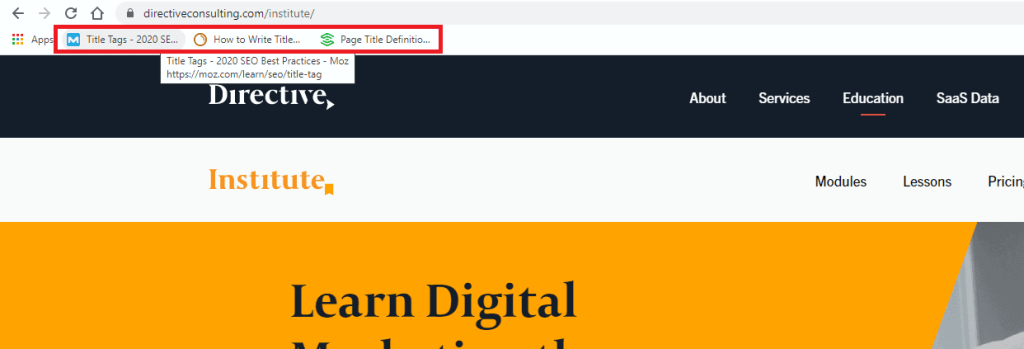
Image: When you create bookmarks, most browsers will automatically name them using the information in the website’s HTML title tag.
If your page titles aren’t properly optimized, search engines will be less likely to rank your pages for the most relevant keywords and you won’t get as much organic traffic.
In the next section, we’ll outline a basic process that you can follow to come up with more effective SEO page titles for your blog posts & webpages.
Crafting an Effective SEO Page Title: Process & Best Practices
- Character & Space Limitations: Page titles can be as long as you want, but you will run into space limitations when they are displayed in search results. In Google search results, the maximum width for headlines is exactly 600 pixels, which usually works out to approximately 50-60 characters. Still, headlines may be truncated at the nearest word-break before the 600-pixel limit. Marketers should craft page titles that convey their most important information within the 600-pixel limit.
- Incorporating Your Focus Keyword: As an SEO best practice, each of your web pages should be optimized for a single focus keyword and you should avoid optimizing multiple pages on your website for the same keyword. Your focus keyword should be mentioned in your title tag, preferably at the beginning to ensure that it is always visible to users.
- Describe Page Contents: A title tag should accurately describe the contents of the page. It should tell users exactly what to expect and it should deliver on those expectations when they arrive.
- Optimize for Search Intent: In addition to optimizing around a focus keyword, you should also optimize for specific search intent. Google is increasingly using search intent to connect searchers with the most valuable content for them. The four search intentions Google has identified are:
- Information search intent – The searcher is looking for information.
- Navigation search intent – The searcher is trying to navigate to a specific website.
- Commercial investigation intent – The searcher is looking for product reviews or comparisons.
- Transaction intent – The searcher wants to buy something now and is looking for a vendor.
In addition to incorporating your focus keyword, your SEO page title should tell users which of these search intentions your web page satisfies.
- Optimize for CTR: As a final optimization step, your SEO page title should include language that encourages or entices audiences to click on your content. If your page title sounds interesting, you’ll enjoy a higher CTR when you feature on Google search results. Try incorporating the following types of information into your title tag to boost your CTR:
- Content Freshness – Mention that your blog post or article contains the most up-to-date information
- Content Depth/Usefulness – Highlight the value of your content and its usefulness to users
- Free Shipping (ECommerce) – Mention free shipping or another free service you offer that would entice someone to check out your store
- Brand Mention – Mentioning your brand name in your SEO page title can help increase brand awareness and build trust with your audience if brand recognition is a strength for your business.
- Solution to a Problem – Use your page title to tell your prospective visitors exactly which of their problems you can solve and how.
Summary
Thanks for viewing our guide on how to increase your search rankings and enhance user experience by optimizing your SEO page titles.
By applying these best practices, you’ll be able to write SEO page titles that communicate the value of your content to both search engines and human users.



